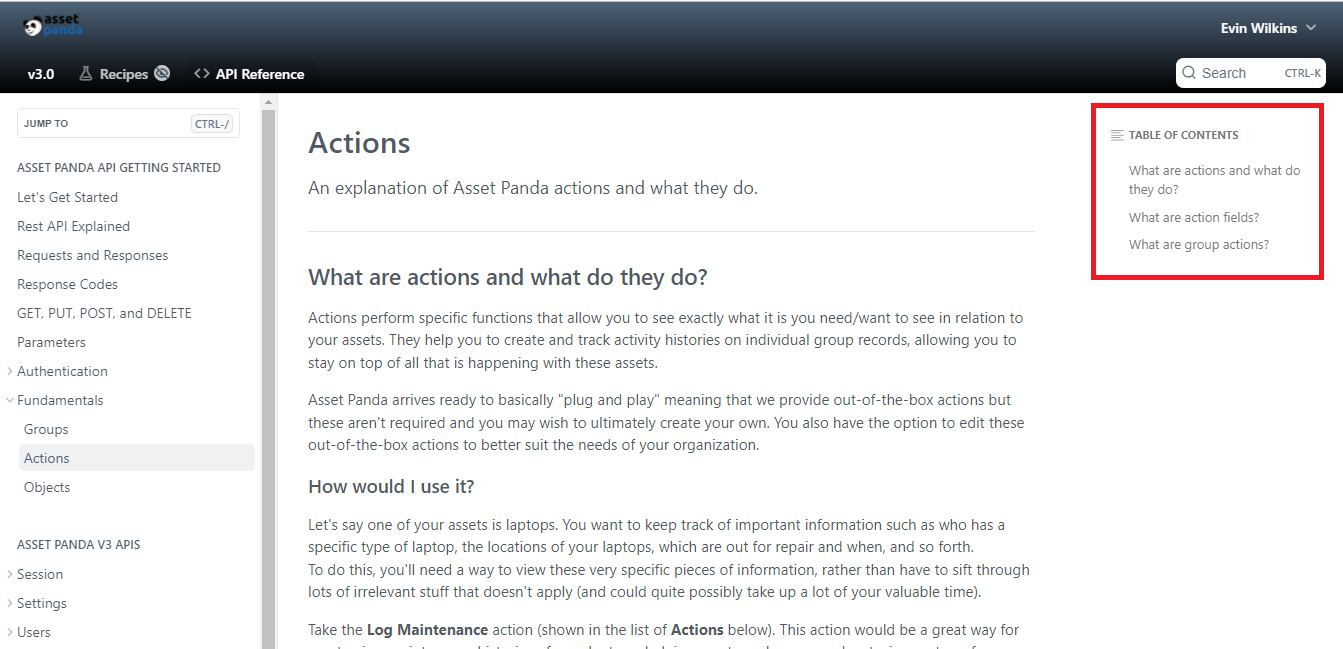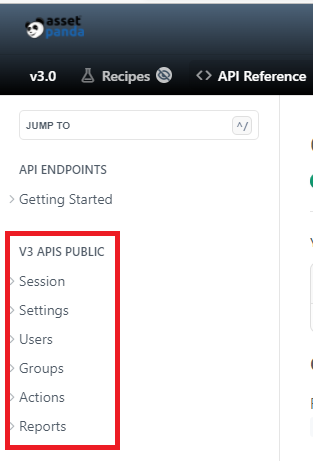Welcome to Asset Panda's REST API
Welcome to Asset Panda's REST API and accompanying reference guide. We've put this guide together to provide you with useful endpoints, parameters, sample requests and responses, along with an opportunity to create your own calls and responses.
Do I need to go through the Getting Started section first?
Not necessarily. You may already be familiar with how APIs work, along with Asset Panda terminology. As a result, you may find that you don't really need the information found in our Getting Started section.
We'd love to have you browse to make sure you're completely up-to-speed but that's up to you. You can jump directly into the API and get started right away if you wish.
If you do choose to poke around our Getting Started section, you'll notice a Table of Contents within each section (when applicable, and on the right side of your screen), allowing you to skip to those sections you may feel you need the most.

How do I navigate the API Documentation?
We'll start by saying that knowledge is key and Asset Panda is fully invested in providing that knowledge.
For those of you who may need a bit of knowledge on how our API works, feel free to click through our Asset Panda API Getting Started section.
Some of you may be ready to delve right into this API and that's cool. Click here to jump right to it. You'll find yourself at the very beginning of our V3 APIS PUBLIC reference to find the endpoints, parameters, requests and responses that you need.

Some of you may prefer to investigate or research our API terminology, along with how this API affects the client-facing side of the Asset Panda application.
We've provided our Asset Panda API Getting Started section to help you get started on the right foot. Just click Rest API Explained at the bottom of this page to proceed, or feel free to skip around by using the table of contents to the left.
How do I use the API calls?
Some of us head over to API documentation to get straight to the point. We have some really good developer knowledge and likely want to skip the "fluff." You can skip on over to V3 API's Public to grab and go.
And...some of us may enjoy a bit more of the "fluff" and wish to learn a bit more about how you would even begin to use some of the calls. Nothing wrong with that. Click Use Cases and Workflow to read over some examples (and to get in on a good action story while you're at it).
